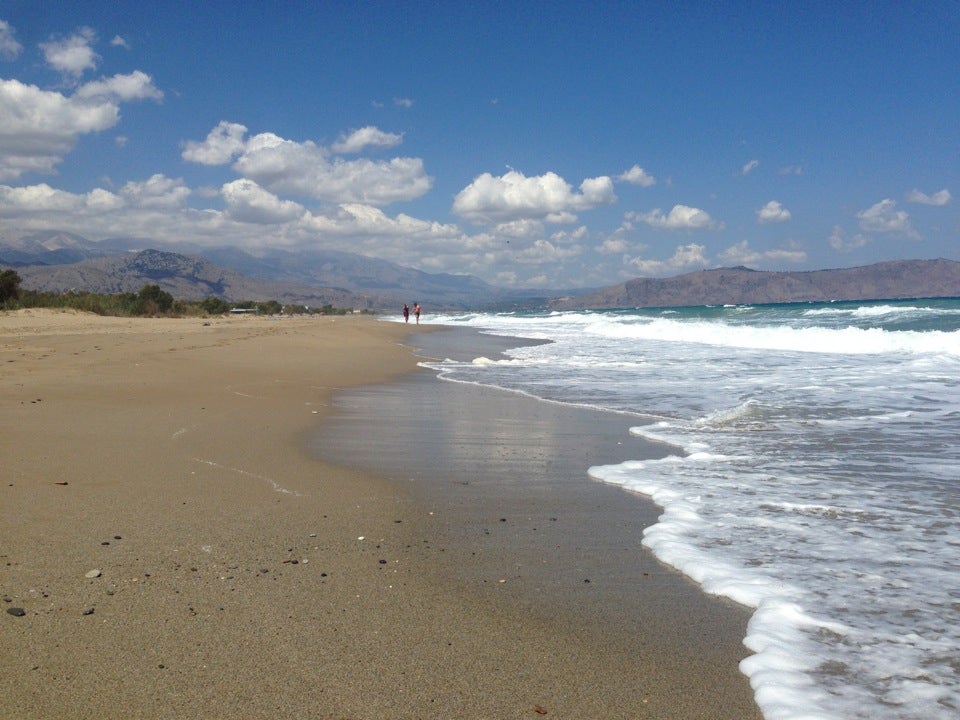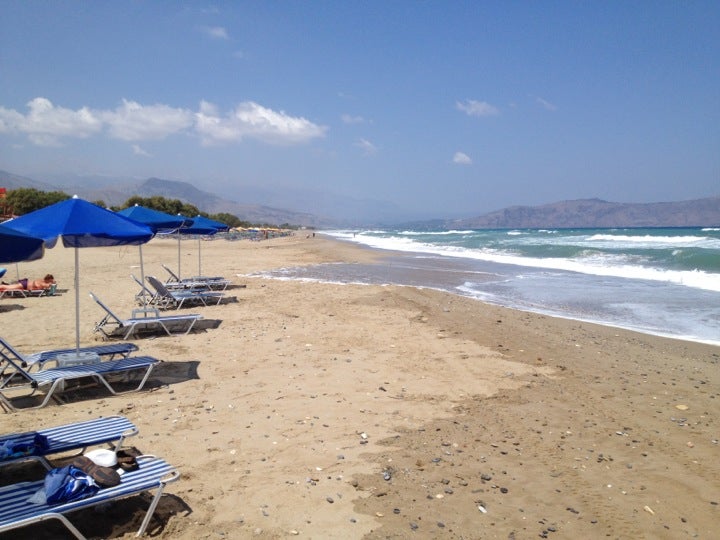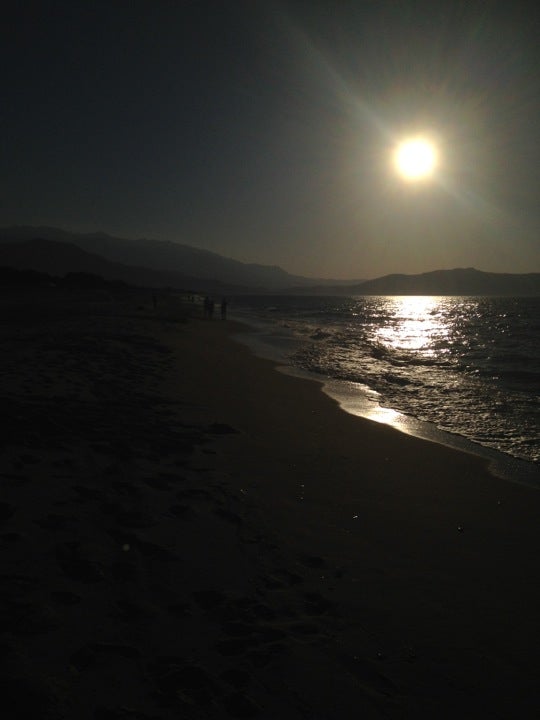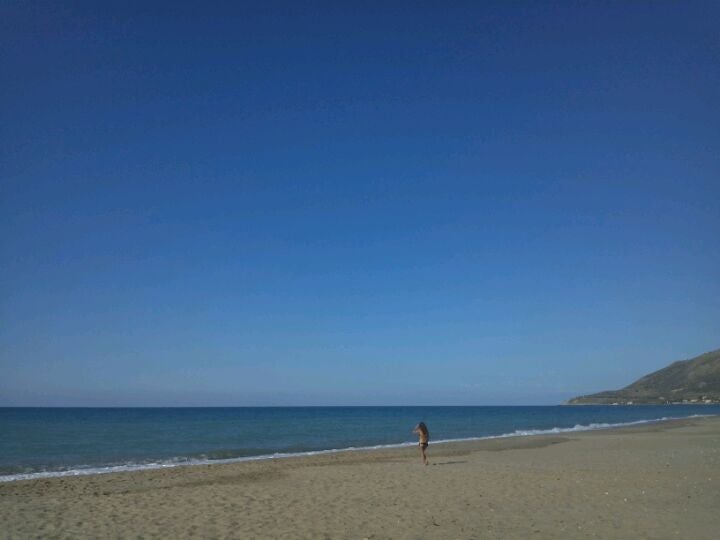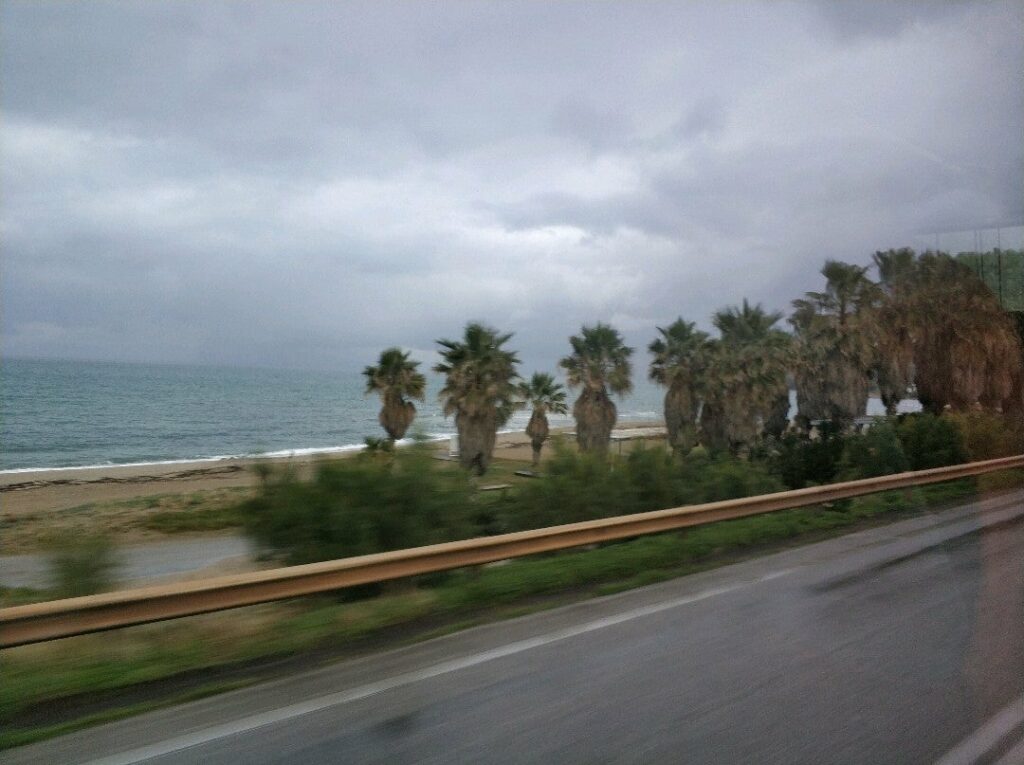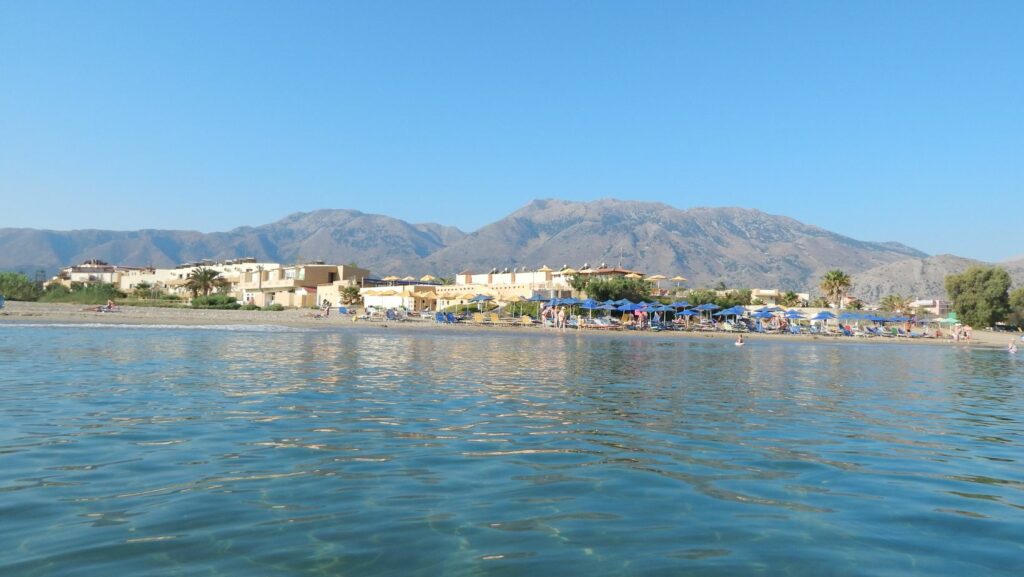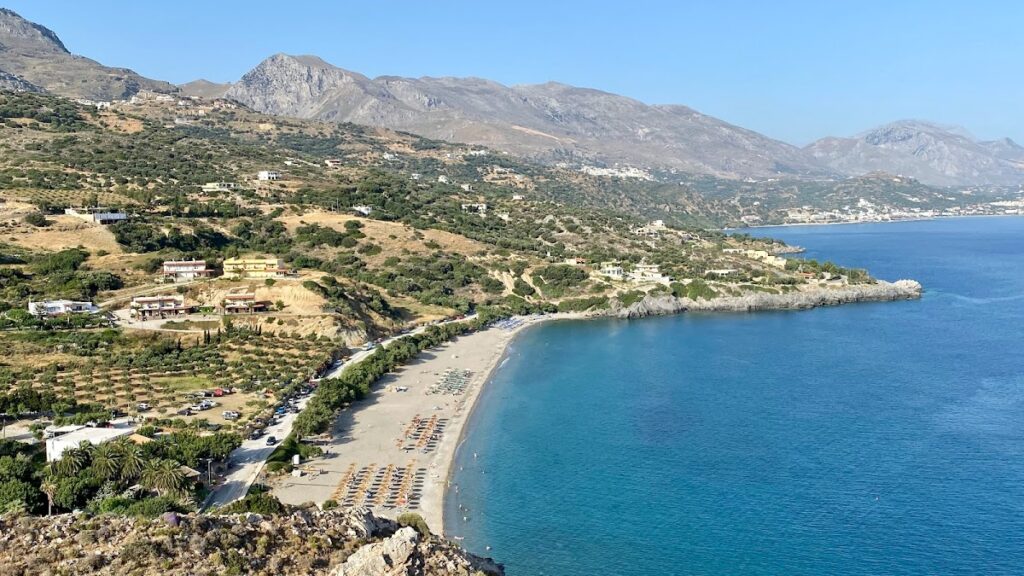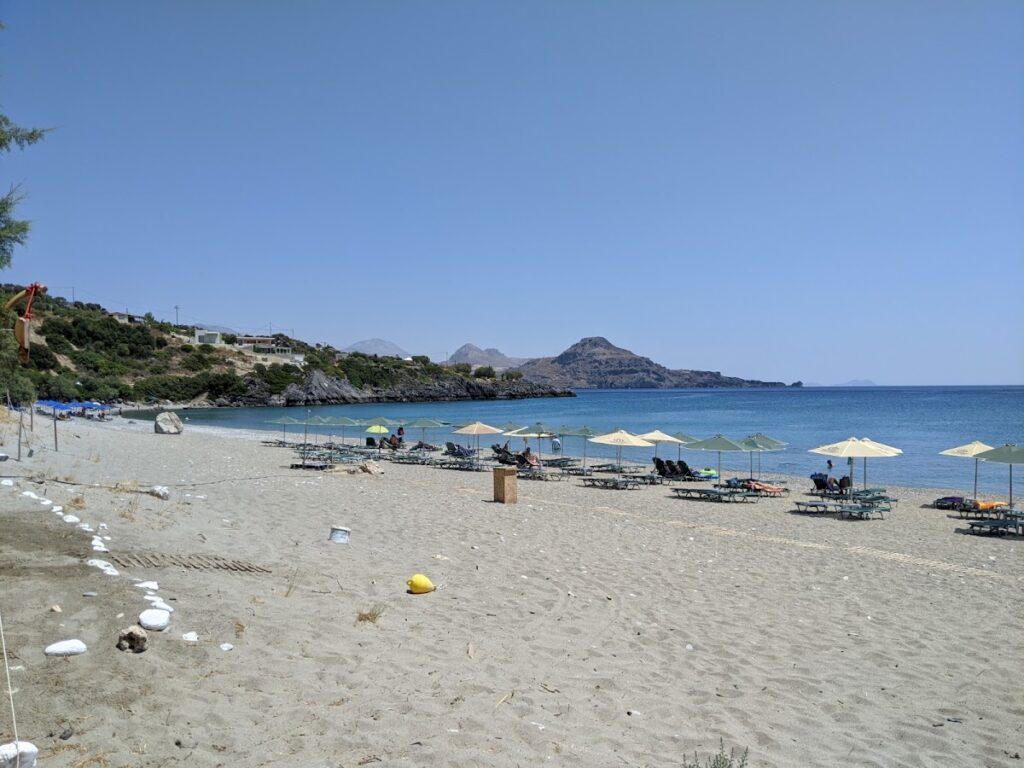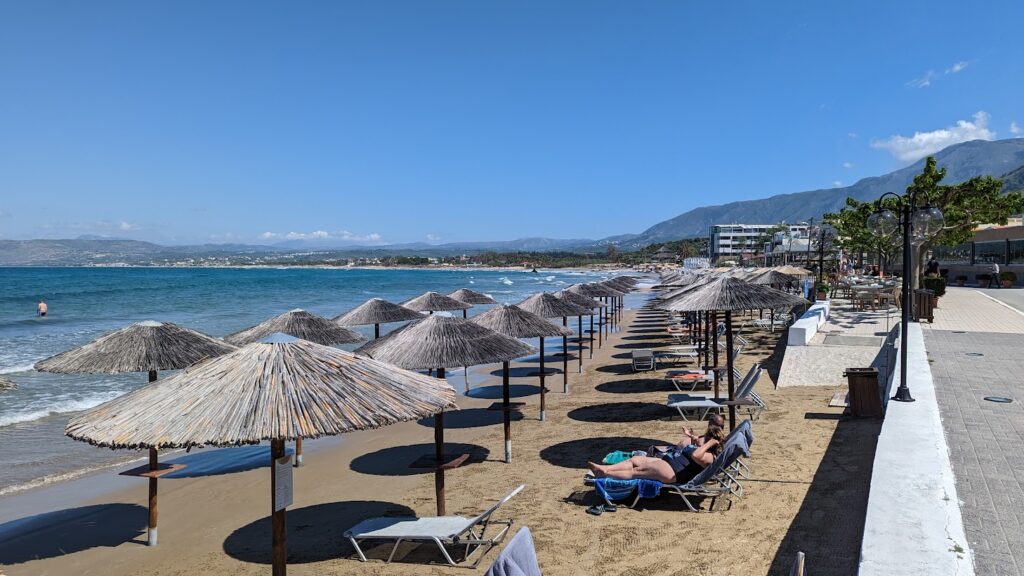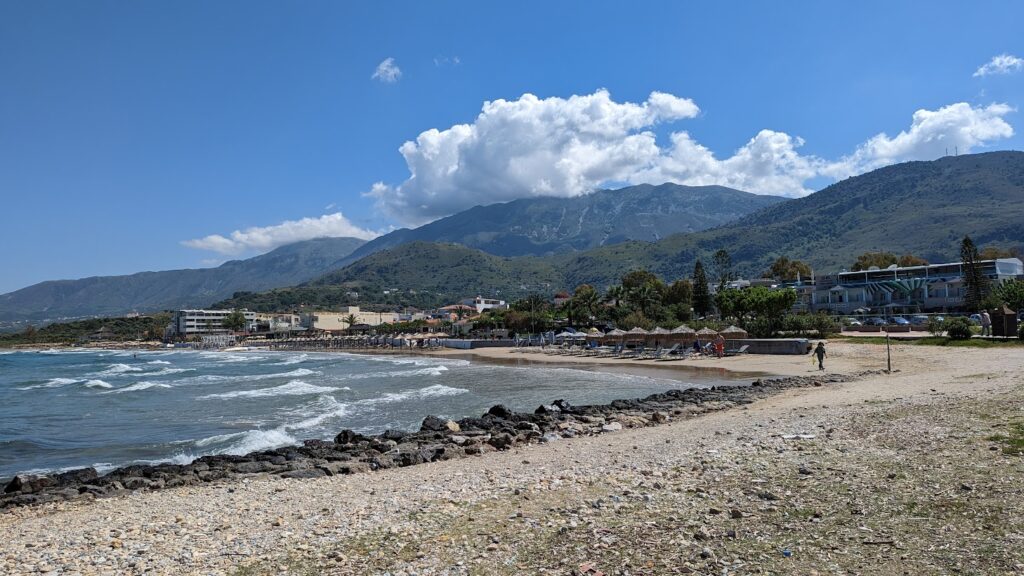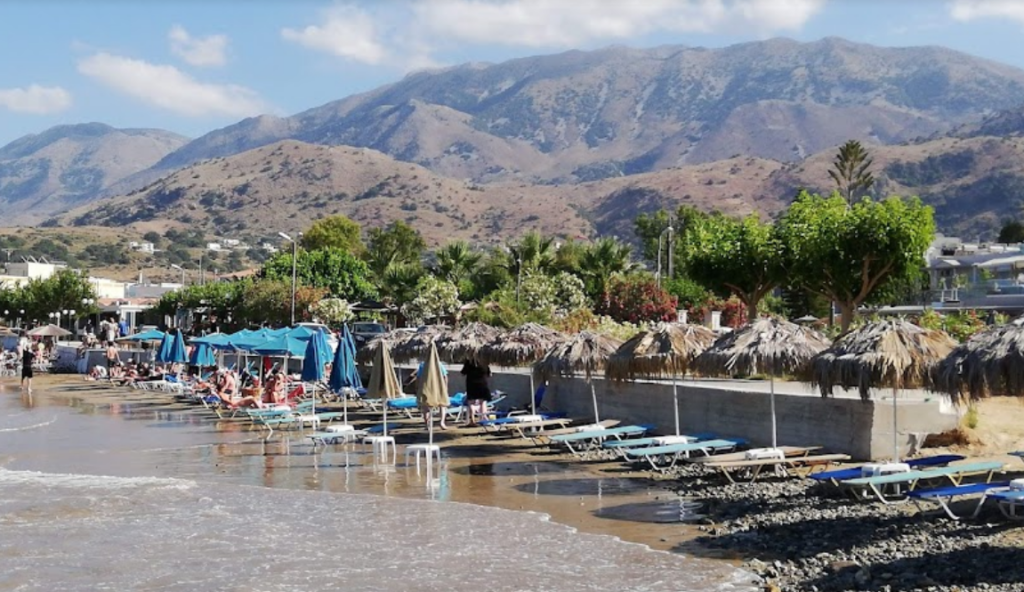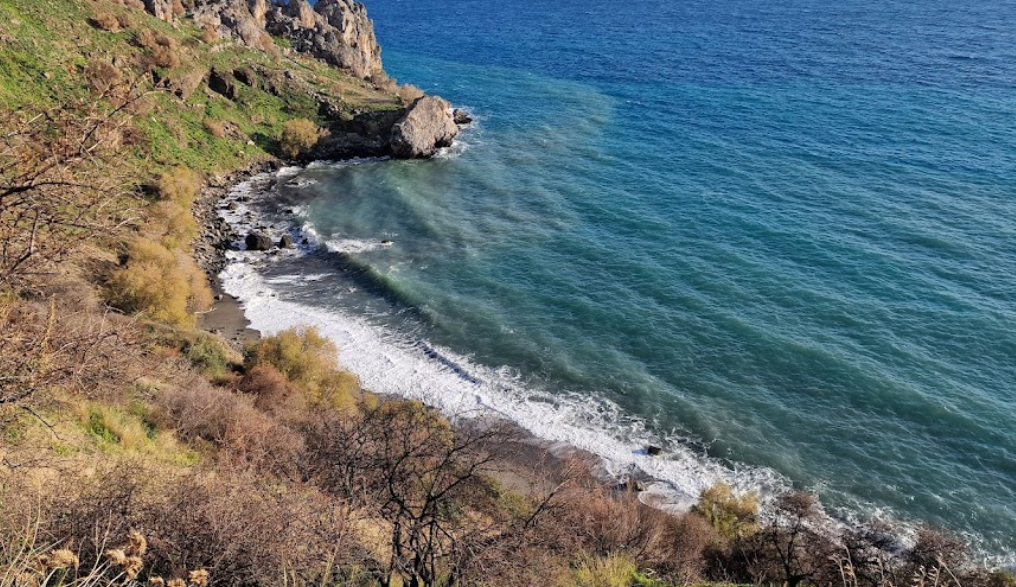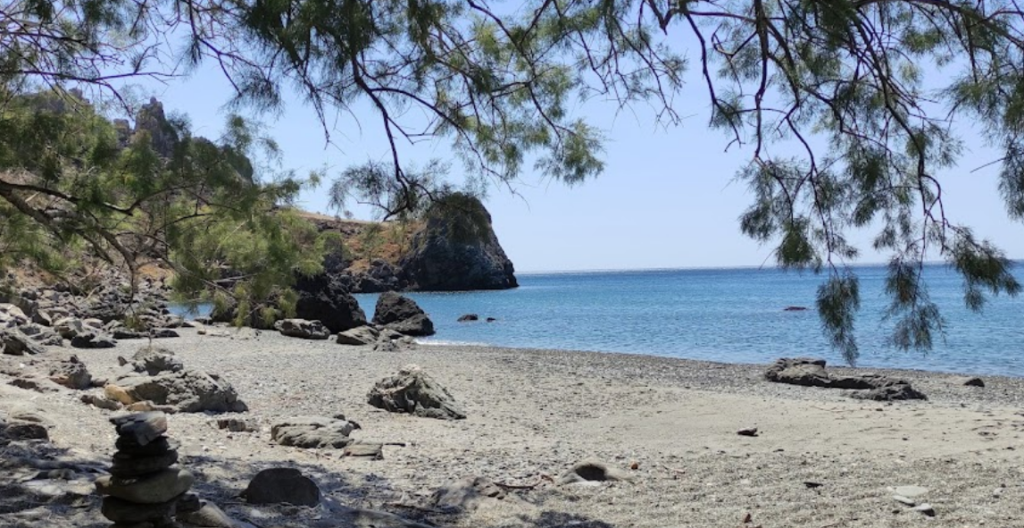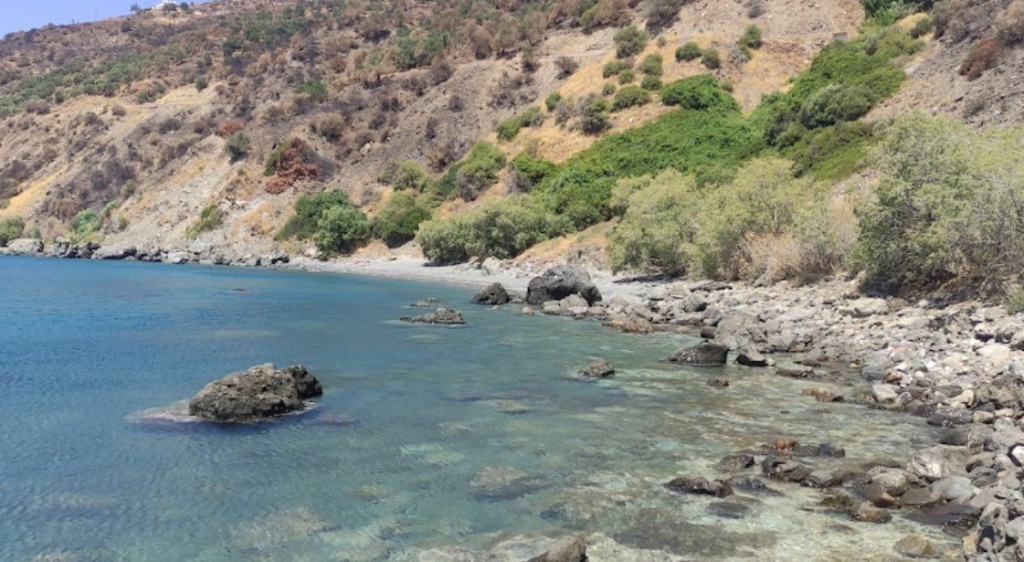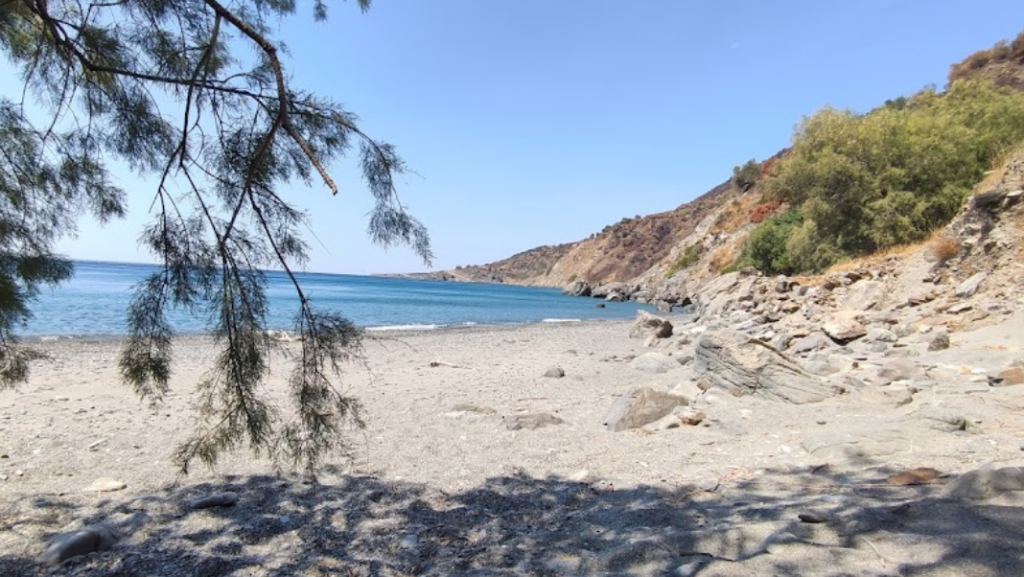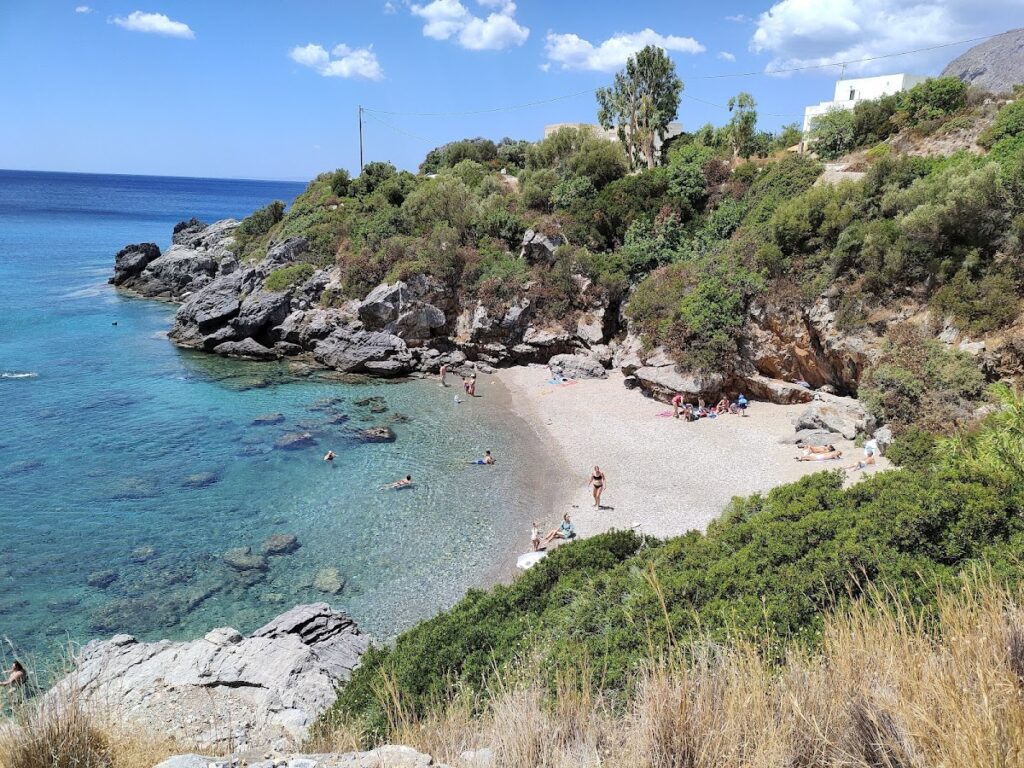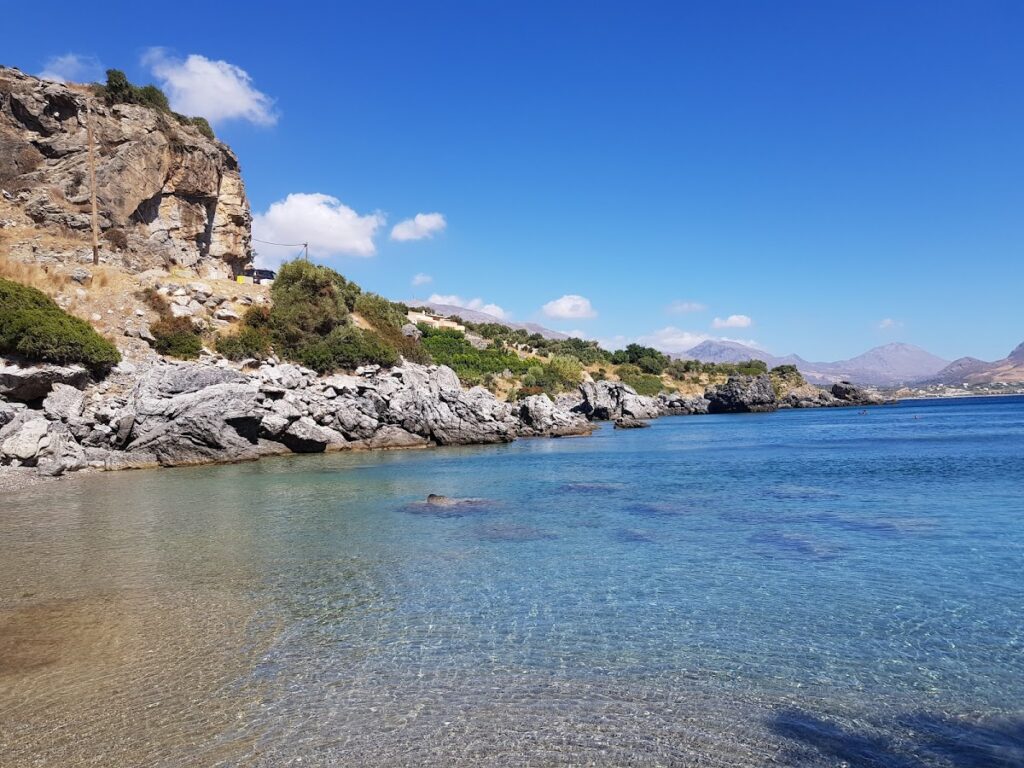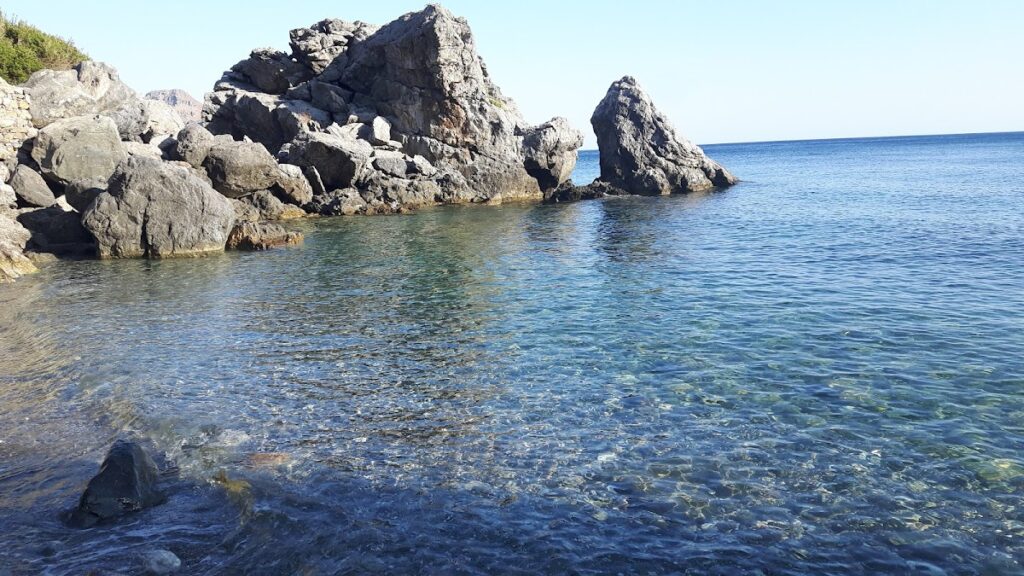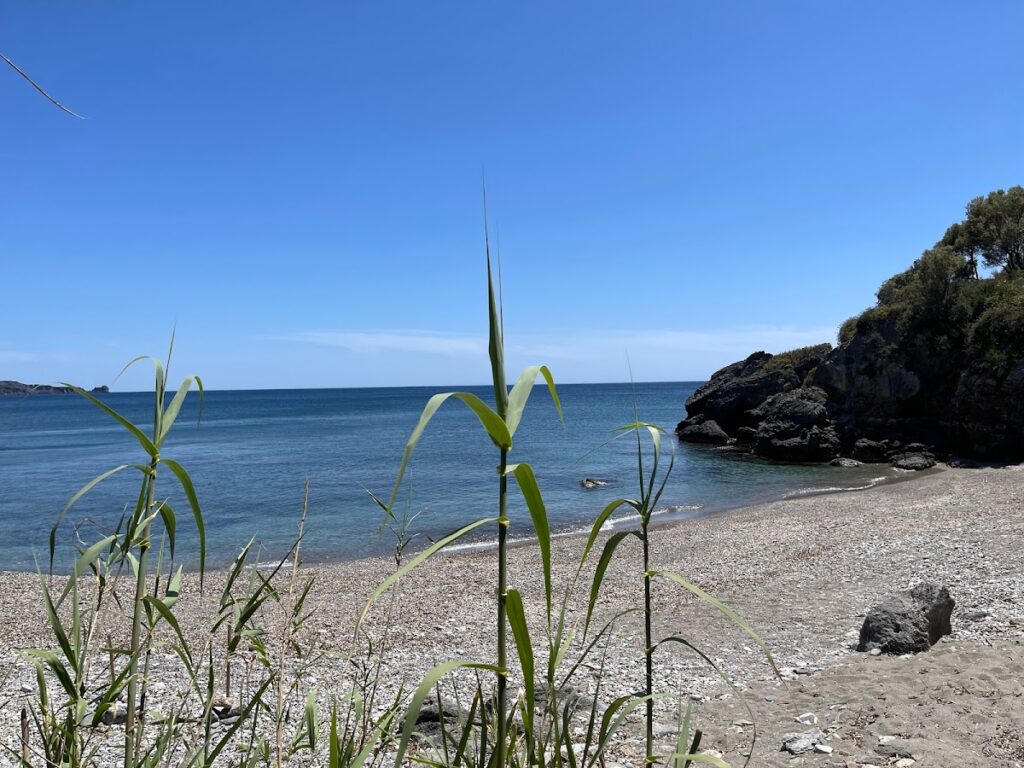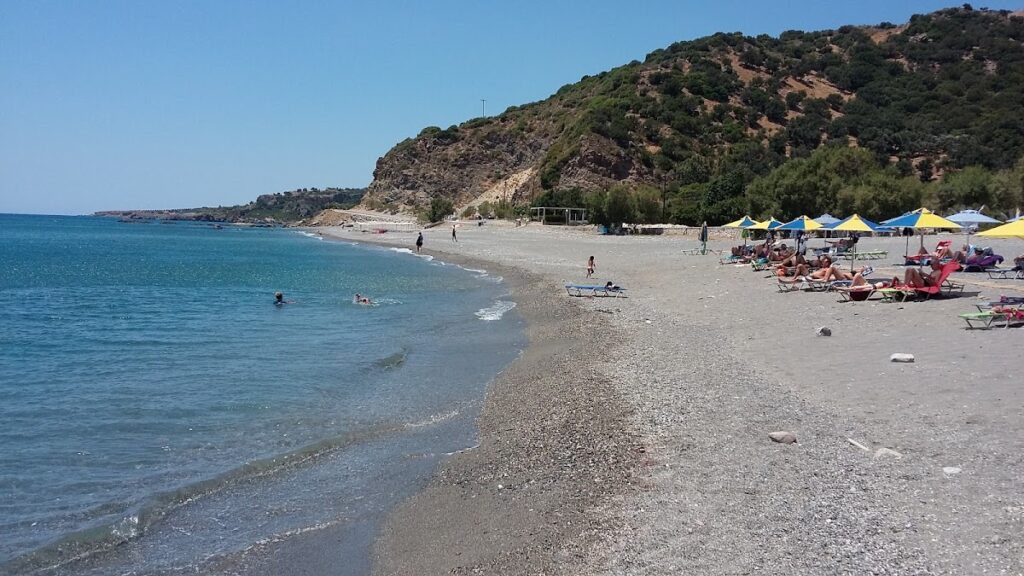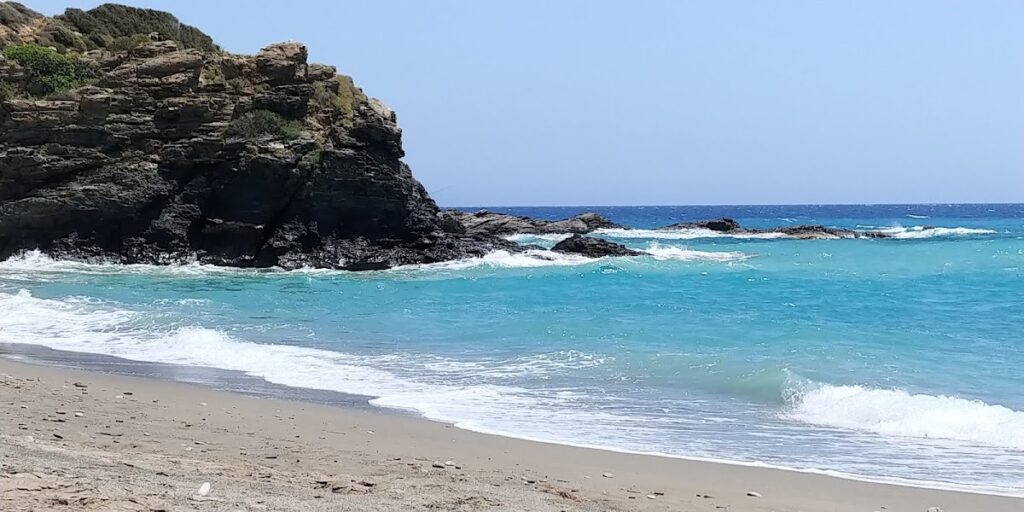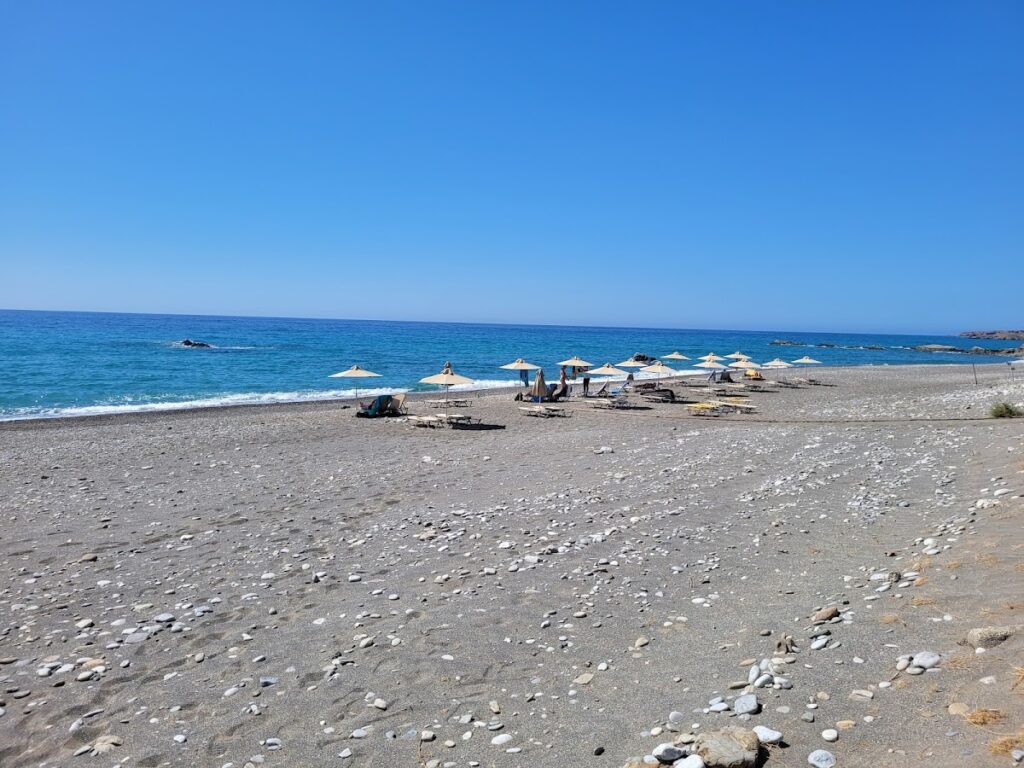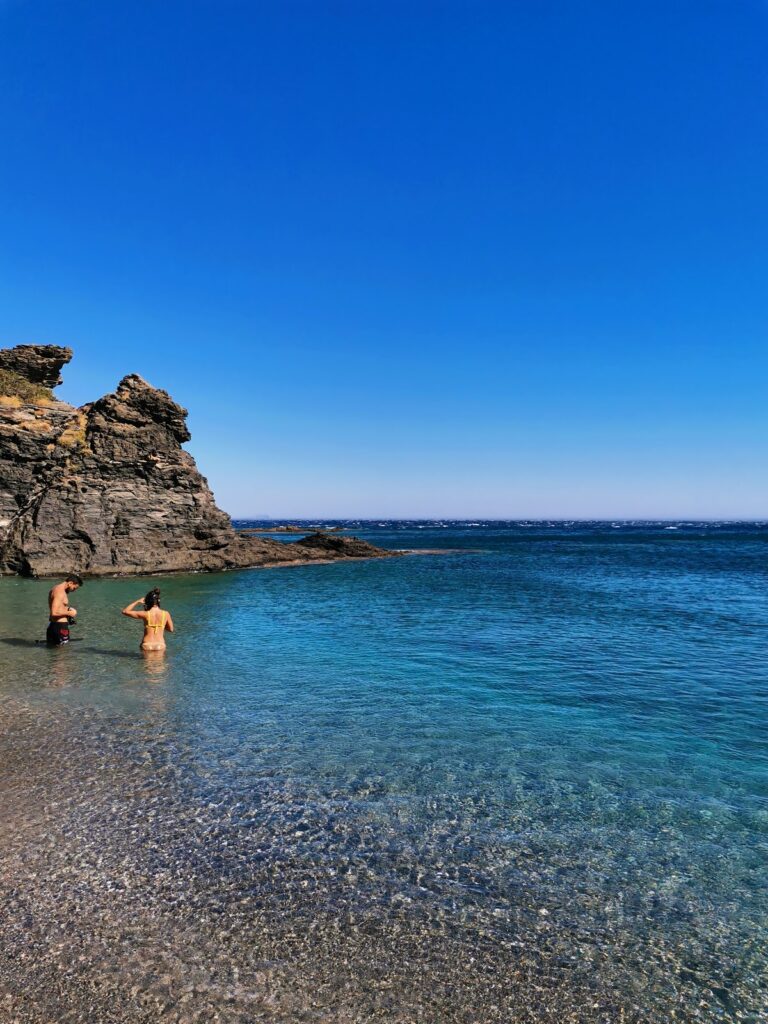Beaches near Argyroúpoli, in Rethymno region
Here is list of closest beaches to Argyroúpoli
- 7.3 km
- Episkopi beach
- Rocks in places, Sand
- Shallow
- Blue
The Episkopi beach, nestled 45km east of Chania and 14km west of Rethymnon, is a charming locale situated in a fertile valley with sprawling lowlands. It borrowed its name from the nearby village, Episkopi, which lies 2km south. Although the place is not widely known among Greeks, the Vardinoyannis family, one of Greece’s wealthiest business families, traces their origins to here.
The beach stretches for 3.5km and is flanked by the Mouselas river on the west and the river flowing through the Petres gorge and beaches on the west. Characteristic of most North Crete beaches, Episkopi is sandy, shallow, and typically wavy. It is well-equipped with numerous hotels, eateries, taverns, bars, and all necessary amenities. The western section of the beach offers lifeguard services, showers, changing rooms, umbrellas, snack bars, water sports, and more. However, due to its considerable length, one can also find quieter spots, especially towards the eastern end near the Petres bridge.
Rethymno and Chania are connected by a main road running parallel to the beach, making access easy either by car or bus. Regular bus services operate from Chania and Rethymno cities. Accommodation options are available in either the local region or in the village of Episkopi. Nearby attractions include the village of Argiroupolis, known for its springs and lush greenery, and Lake Kournas. Episkopi, translating to Diocese in Greek, was indeed the area’s Diocese during the Byzantine Period. However, the ancient Episcopal church of St. Nicholas is now in ruins.
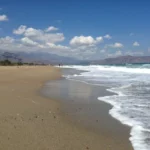
- 7.9 km
- Petres beach
- Rocks in places, Sand
- Shallow
- Blue
Situated at the eastern edge of the expansive Episkopi beachfront, Petres beach, or Stones beach, is a 46km journey east from Chania and 13km west from Rethymnon. The beach owes its name to the majestic Petres Gorge that concludes at this point. The area is dotted with facilities such as accommodations, eateries, and even a diving school. The Vythos cove, positioned north of the other areas, offers umbrellas and a less sandy terrain. The rocky underwater landscape makes it a hotspot for fishing and snorkelling. However, the frequent northern winds can cause the sea to become wavy.

- 8.3 km
- Kavros beach at Kournas
- Sand
- Shallow
- Blue
Located between Georgioupoli and Pyrgos, Kavros refers to the expansive beach situated just 4 km east of Georgioupoli, near the hotel bearing the same name. Though the area has experienced substantial tourist development, it’s somewhat less commercialized compared to the adjacent Georgioupolis. Kavros beach is a sandy stretch with transparent, shallow waters; however, its openness to the wind often results in notable wave activity. The beach provides several facilities for visitors, including an array of restaurants, cafes, and bars, making it a perfect spot for an all-day excursion. For those seeking tranquillity, parts of the beach remain unorganized, offering a more serene experience.
The place at its greatest part is developed and only a very small part of it has been left untouched. Between the remaining virgin parts of the beach, there is an extensive and very important ecosystem of dunes. The dunes of Kavros, like all dunes, host a significant and very fragile ecosystem that is home to its own plants. The most important role of the dunes in Crete is that they protect the inner lands from erosion. In the area, in winter we meet small ponds and the landscape is quite different from the summer.
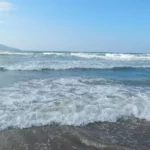
- 10.7 km
- Kamari beach
- Rocks in places, Sand
- Normal
- Blue
Kamari Beach is situated roughly 7km west of Rethymnon, close to Gerani village, at the entrance of Vederi Gorge. The coastal highway linking Chania and Rethymnon runs adjacent to the beach and over the Gerani bridge.
The beach is relatively compact, featuring pebbles and rocks in certain areas, making it a favourite among snorkelers. Despite being exposed to frequent northerly winds, it offers some amenities such as a few umbrellas, taverns, and rooms. Additionally, a quaint harbour and the charming Panagia Kamariani church can be found nearby.
A short distance south of the beach, one can find the sealed entrance to the Gerani cave, a significant archaeological site in central Crete, discovered unexpectedly during the construction of the main road. Moreover, visitors can explore the scenic narrow streets of Gerani village and visit the St George church along with several smaller churches.

- 10.7 km
- Souda beach
- Fine Pebbles, Rocks in places
- Normal
- Blue, Green
Souda is nestled 41km to the southwest of Rethymno city, and a mere 3km east from the bustling resort of Plakias. Don’t mistake it for Souda Bay, the natural harbour of Chania city. It is, in fact, the final beach along the Plakias seafront, known as Yialia, commencing at Shinaria many kilometers away. Situated at the mouth of a verdant valley, Souda is crisscrossed by the Finikas river, which flows all year round. Cretan palm trees of Theophrastus, native to the area, flourish along the river and numerous other locations, establishing Souda as a significant refuge for the species.
In the midst of this stunning landscape, a sandy beach stretches out, adored by all who visit. However, this affection can quickly turn to annoyance when the northern winds whip up the sand, blasting unsuspecting swimmers. The landscape today bears no resemblance to the secluded paradise of the 90s, where a narrow dirt path led to a rocky shoreline and a sparsely populated nudist beach. While nudists still frequent the area, they no longer enjoy the same level of comfort. The beach is now more accessible with paved roads, organized facilities, umbrellas, and showers. There are several taverns and accommodations nearby. The rocky beach edges offer ideal conditions for fishing and snorkeling. A few benches can be found above the eastern rocks on the main road, offering panoramic views of the South Cretan Sea.

- 10.7 km
- Georgioupolis beaches
- Sand
- Shallow
- Blue
Georgioupolis, a small coastal town located 38km east of Chania and 21km west of Rethymnon, is a seaside resort nestled in a verdant valley crisscrossed by rivers and springs. Situated on the western edge of a sprawling 10km beach, the town’s beach spans 2km to the east, beginning at the Almiros river and terminating at Kavros beach, a natural continuation of the former. The beach in Georgioupolis is sandy, dotted with dunes, and has shallow waters.
The beach is well-maintained and child-friendly, with lifeguards on duty. Caution is advised during windy conditions due to sea currents. Amenities such as umbrellas, showers, and food and drink stalls are available for beachgoers. Approximately 700m east of the port, the Perastikos river bifurcates the beach, which then widens as it continues eastward. On the opposite end, west of Georgioupolis’s port and near the Almyros river’s exit, lies the picturesque Kalivaki beach.
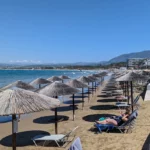
- 10.8 km
- Klimata beach
- Fine Pebbles, Rocks in places
- Normal
- Blue
Klimata, known for its vines, is a 45km journey south from the city of Rethymno, situated next to the popular Korakas beach, close to Rodakino village. Korakas and Klimata are divided by a brief, rocky cape. Klimata is a petite bay consisting of three sequential beaches. Rodakino’s small harbour is found on the bay’s west side, reachable via a cement-paved path that starts from Korakas. From here, the first beach is easily accessible, positioned just beside the harbour. To get to the other two beaches, one can either walk through the first beach or take the dust road that links Korakas to Souda beach in Plakias.
Klimata is not organised in any way, with only Korakas beach being so. All three beaches are known for their fine pebbles and transparent waters. In certain areas, the rocky sea floor is ideal for snorkelling. It’s likely that these beaches will be deserted, except for a handful of privacy enthusiasts or naturists. Klimata, meaning vines, is named after the vineyards that were once grown on the nearby slopes.

- 10.9 km
- Fotinari beach
- Fine Pebbles, Pebbles, Rocks in places
- Normal
- Blue, Green
Situated 37km south of Rethymno, nestled between Plakias and Souda’s beach, Fotinari (also known as Foteinari) offers two serene beaches resting in a compact bay rich with vegetation. The rocky seabed provides a perfect spot for fishing and snorkelling activities.
These adjoining pebbly beaches lack organisation, however, you can easily find accommodation and dining options nearby. As you approach from Plakias, heading towards Souda beach, the first beach you’ll encounter is the Small Fotinari, also referred to as Fotinaraki, due to its smaller size compared to the following beach, the Big Fotinari.
Both beaches are conveniently located near the main road, which runs directly over them. Two brief stone paths cut through a pair of small woods, leading straight to the beach. Additionally, Big Fotinari offers shade beneath the towering rocks that surround it.
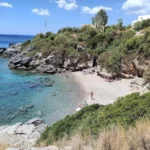
- 11.0 km
- Korakas beach
- Fine Pebbles, Rocks in places
- Normal
- Blue
Situated 45km southeast of the city of Rethymno, right on the edge of the steep Rodakino canyon that cuts through the Kryoneritis mountain, is the village of Rodakino. The village is nestled between the resort of Plakias to the west and Fragokastelo to the east. Rodakino, a traditional Cretan village, spreads on both sides of the gorge, creating two distinct settlements known as Kato and Ano Rodakino. From the village, one can enjoy the stunning views of the azure South Cretan Sea. The village derives its name, which translates to ‘peach’ in Greek, from a peach tree that managed to grow in the region’s arid climate. Some locals, however, believe the gorge was originally named Rikinthos, which over time morphed into Rodakino.
A few kilometres south of the village, where the canyon’s torrent meets the sea, lie several serene beaches. To reach them, one must follow the road leading to Korakas beach. Despite being blessed with an extensive beachfront, Rodakino has managed to preserve its traditional charm and tranquillity. The first beach you encounter at the end of the dry river is the Korakas beach, named after the Greek word for ‘crow’. It boasts of a long coastline with fine greyish pebbles and crystal-clear waters. There are a few amenities like umbrellas, taverns and rooms for rent. On the eastern end of the beach, there are hollowed-out rocks that locals believe once resembled a crow’s beak before being eroded by the sea and salt.
In the vicinity of Ano Rodakino, you’ll find the age-old churches of the Assumption, Transfiguration and Saint Panteleimon. Kato Rodakino is home to the old churches of St. George, Prophet Elijah and St. Anthony. Adventure seekers can follow the E4 trail to the summit of Kryoneritis Mount and then descend to Alones. At the peak, you’ll find the Church of the Holy Spirit, where a grand festival is held annually. According to local folklore, a shepherd discovered an icon of the Holy Spirit in a hole near the chapel, guided by the light of the Holy Spirit. The icon would mysteriously disappear when taken home and reappear at the same spot. This story led to the construction of the church. Moreover, the first flag of the Revolution was unfurled at the Kourkoulos site on May 24, 1821, by Melchizedek Tsouderos, the abbot of the Preveli monastery.
During the Cretan revolution of 1866, Korakas bay played a significant role as a landing spot for Greek cruisers unloading munitions, which were stored in the nearby Skotini cave. It was also the site where the famed steamship “Arcadi” made one of its final voyages to deliver munitions but was forced to retreat by the Ottomans.
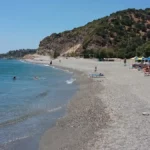
- 11.1 km
- Pefkias beaches
- Fine Pebbles, Rocks in places
- Normal
- Blue
Perkins is a remote and dry area of southern Crete, nestled between the villages of Rodakino and Plakias, 43km to the south of Rethymno. This harsh terrain is dotted with a handful of secluded beaches, accessible either by boat or via the off-road route linking Souda beach to Korakas beach. From east to west, the beaches include Kokkinos Volakas, Stavri, Filadelfi, Parahoristra, Agios Antonios, Hohlakas, and Klimata.
The primary beach in Pefkias is located near the Souda bay and is known as Kokkinos Volakas (Red rock), named for the reddish rock found at its eastern end. A small beach alongside the rock houses a tiny cave and a small cluster of Cretan Date Palms, which originated from the neighboring Souda palm grove. The beach is pebbly and rocky, making it a perfect spot for fishing and snorkeling. Also, due to the lack of natural shade and minimal visitors, it is an ideal location for nudists.
To the east lies the smaller beach of Stavri, which is equally isolated and deserted. Visitors are unlikely to encounter anything or anyone else here. Like Kokkinos Volakas, Stavri can also be reached via the same off-road path connecting Souda to Rodakino.
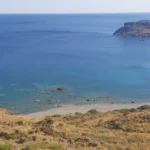
No results available
ResetBeaches in other nearby areas
No results available
Reset